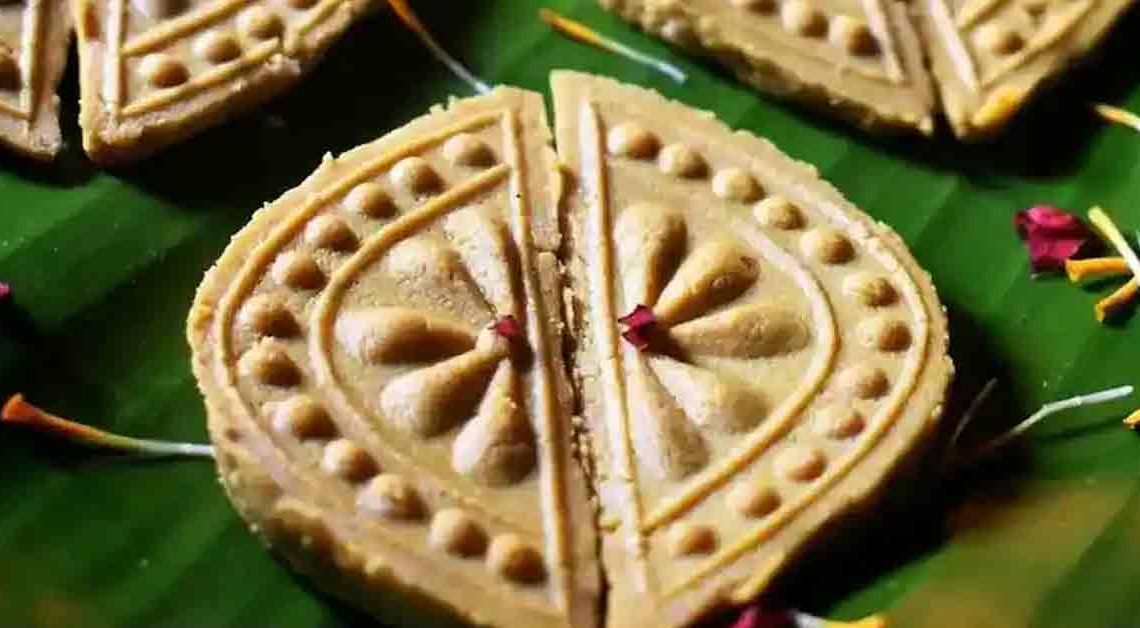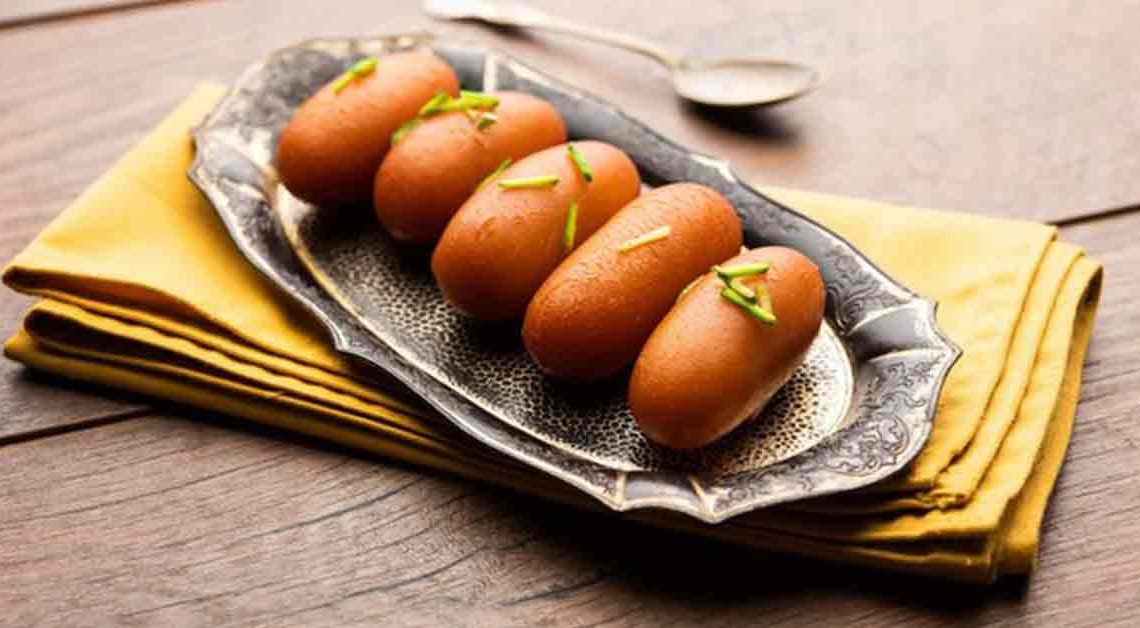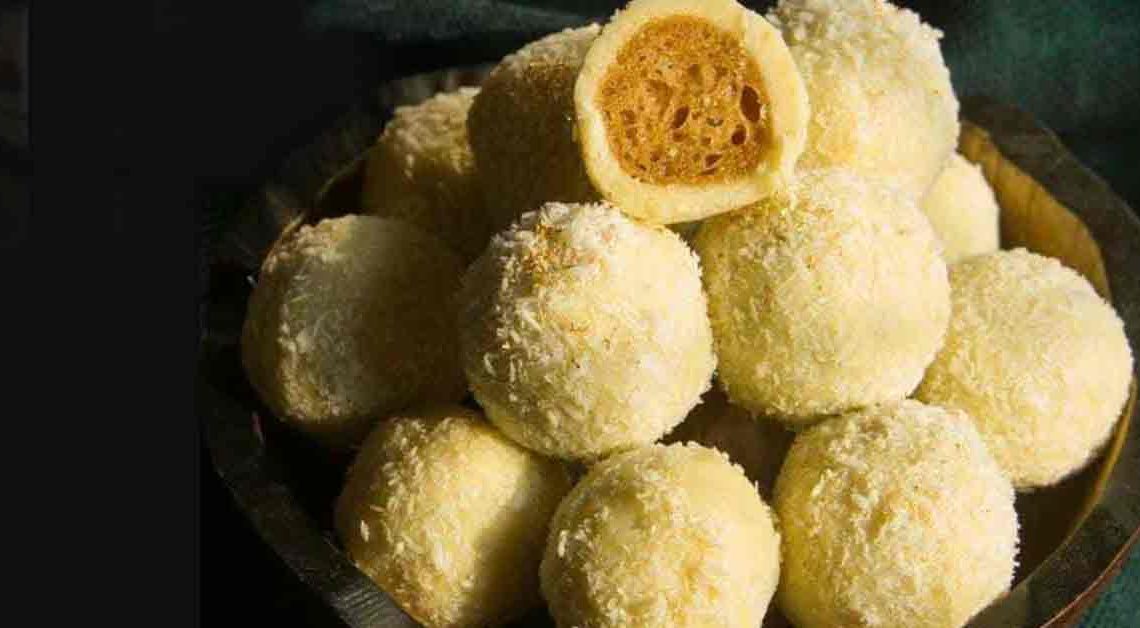Moonlit Delight: Chandrapuli

In the heart of Bengal lies a delicacy that transcends mere food – it is a story, a legacy, a tradition. Chandrapuli, with its origins deeply rooted in the rich soil of Bengali culture, is more than just a sweet treat; it is a symbol of celebration, community, and heritage.
Imagine sinking your teeth into a piece of Chandrapuli, feeling the delicate layers of coconut and molasses dance on your taste buds, each bite taking you on a journey through the lanes of old Bengal, where every festival and gathering was incomplete without this heavenly dessert.
In this blog, we delve deep into the history of Chandrapuli, tracing its origins to ancient Bengal, where it was first crafted by skilled hands as an offering to the gods. We explore the various regional variations and modern interpretations, showcasing how this humble sweet has evolved over the centuries yet managed to retain its essence.
Welcome to Mithainama! Lets explore Chandrapuli Delight – where every bite tells a story.
Origin of Chandrapuli
The origin dates back to ancient Bengal, where it was first crafted as an offering to the gods during religious ceremonies and festivals. The name “Chandrapuli” is believed to have been derived from the combination of two words: “Chandra,” which means moon, and “puli,” which refers to a sweet filled with coconut and sugar.
It was created by the skilled artisans of Bengal who wanted to create a sweet that not only tasted divine but also resembled the shape of the crescent moon, a symbol of prosperity and good fortune in Indian culture. The crescent shape also represents the moon’s phases, symbolizing the cyclical nature of life and the universe.
Over the centuries, it has evolved from being just a religious offering to becoming a beloved sweet enjoyed during various occasions such as weddings, festivals, and celebrations. Today, Chandrapuli is not only a culinary delight but also a symbol of Bengal’s rich cultural heritage and traditions, cherished by people of all ages.
History of Chandrapuli
The history is as rich and layered as the dessert itself. Originating in Bengal, Chandrapuli has a storied past that dates back centuries.
It can be found in ancient Sanskrit texts, where it is described as a sweet offering made during religious ceremonies and festivals. The use of ingredients such as coconut, sugar, and flour in Chandrapuli suggests that it was a popular sweet even in ancient times.
As Bengal flourished and evolved over the centuries, the sweet became closely associated with Bengali culture and tradition, often being served at weddings, festivals, and other celebratory occasions.
One of the key aspects of Chandrapuli is its shape, which is said to resemble the crescent moon. This shape not only gives the sweet its name but also holds symbolic significance, representing prosperity and good fortune.
Cultural Significance
It holds deep cultural significance in Bengali society, serving as more than just a sweet treat. It is a symbol of tradition, celebration, and community.
Religious Significance: It has religious roots and is often used as an offering to the gods during Hindu festivals and ceremonies. Its crescent moon shape symbolizes auspiciousness and is believed to bring good luck.
Festivals and Celebrations: It is a staple at Bengali weddings, festivals like Durga Puja and Kali Puja, and other celebrations. It is often exchanged as a token of love and respect among family and friends during these occasions.
Community Bonding: The making and sharing have long been a communal activity in Bengali households. Families and neighbors come together to prepare this delicacy, strengthening bonds and fostering a sense of togetherness.
Where is Chandrapuli Famous?
It is primarily famous in the Indian state of West Bengal, where it originated. It is a popular sweet in Bengali cuisine and is widely enjoyed across the state during festivals, weddings, and other celebrations.
It is also popular in other parts of India where Bengali communities are present, such as in the states of Assam, Tripura, and Jharkhand. Additionally, its fame has spread to other countries with a significant Bengali diaspora, including Bangladesh, where it is also enjoyed as a traditional sweet.
In recent years, with the increased interest in regional Indian cuisine, Chandrapuli has garnered attention in culinary circles beyond its traditional areas, gaining recognition for its unique flavors and cultural significance.
Interesting Facts and Trivia
Here are some interesting facts and trivia related to Chandrapuli:
- It is believed to have originated in ancient Bengal and has been mentioned in Sanskrit texts dating back centuries, highlighting its long history.
- The crescent moon shape is not only visually appealing but also holds symbolic significance, representing prosperity and good fortune in Indian culture.
- It is often used as an offering to Hindu deities during religious ceremonies and festivals, emphasizing its role in religious and cultural practices.
- The main ingredients include coconut, sugar, and flour, reflecting the agricultural practices and culinary traditions of Bengal.
- The making and sharing of Chandrapuli have long been a community tradition in Bengal, with families and neighbors coming together to prepare this sweet during festivals and special occasions.
Did You Know?
Did you know that Chandrapuli, besides being a delicious sweet treat, also offers health benefits? This traditional Bengali sweet is made with coconut, which is rich in fiber, vitamins, and minerals. Here are some benefits of consuming it:
- Coconut, a key ingredient in Chandrapuli, is high in dietary fiber, which aids digestion and promotes gut health.
- Coconut contains healthy fats, including medium-chain triglycerides (MCTs), which are known to boost metabolism and support heart health.
- It provides essential vitamins and minerals, such as iron, potassium, and vitamin C, which are important for overall health and well-being.
- The combination of coconut and sugar in sweet provides a quick energy boost, making it a great snack or dessert option.
- Coconut and molasses, another ingredient contains antioxidants that help protect the body against oxidative stress and inflammation.







